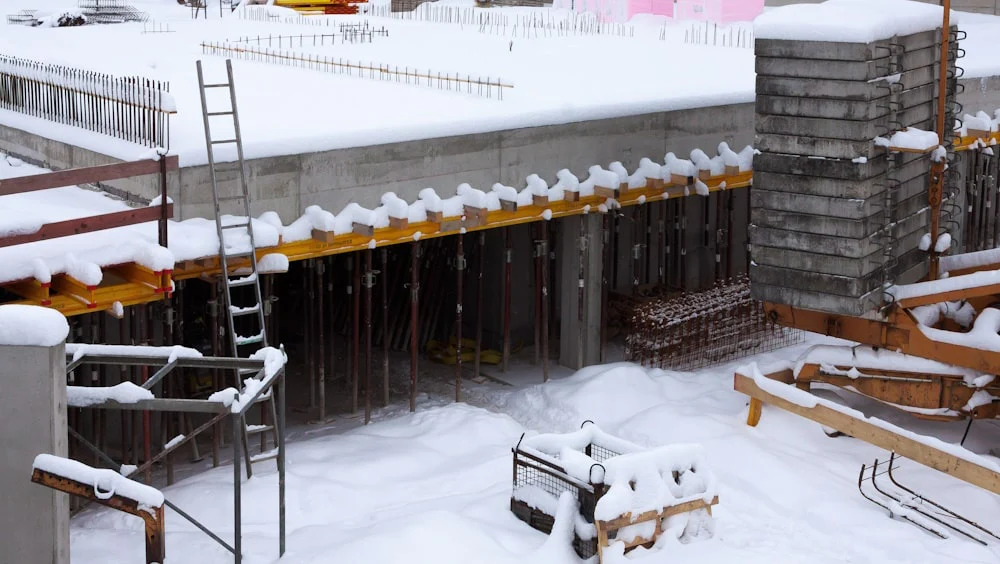Contingency in Construction cushions unexpected shifts like material price hikes or weather delays that often derail timelines. Integrating allowances during construction takeoff helps teams absorb these shocks without halting progress. Studies show Australian projects with 10% contingency budgets experience 25% fewer financial overruns, ensuring smoother project delivery.
What Unexpected Events Can Increase Construction Costs?
Even meticulously planned builds encounter curveballs that inflate budgets, from natural forces to market shifts. Studies by ACIF in 2024 highlight ongoing challenges, including planning delays and skills shortages, which compound these issues and push total project delays higher.5 Construction Hidden Costs That Drain Profits & How to Avoid Them
Weather disruptions and site delays
Heavy rains or scorching heatwaves can grind progress to a halt, slowing concrete sets and machinery use while cutting worker output. Australian Bureau of Meteorology trends show rising extreme weather events, with temperatures climbing steadily since 1910, amplifying risks across sites. Understanding on-site estimate meaning helps teams gauge these impacts early, adjusting timelines to avoid cascading overruns.
Sudden material price fluctuations
Steel and timber costs can spike sharply due to global supply snags or trade barriers, with IBISWorld noting rises of up to 8.3% in structural steel fabricating revenue dips tied to input volatility in 2024. Builders must weave this unpredictability into contingency in construction plans, using buffers to shield against abrupt 10-25% surges that erode profit margins.
Design changes during construction
Mid-build tweaks, such as beefing up supports for new regulations, often rack up extra materials and rework hours. Integrating Building Information Modelling early, alongside routine client check-ins, curbs these escalations. For instance, a Melbourne office retrofit saw costs jump 15% from late seismic upgrades, underscoring the need for flexible yet firm planning.
Labour shortages or equipment breakdowns
Australia’s construction sector grapples with a widening skills gap, where shortages have ballooned timelines by around 12% on average since 2023, per ABS data showing 90,000 more workers needed by late 2024. Sudden machine failures compound this, stalling sites and demanding quick fixes that tap into contingency in construction reserves to keep momentum.
How to Predict and Prepare for These Unplanned Costs?
Forecasting hiccups demands blending past lessons with forward-thinking tools, turning potential pitfalls into managed risks. Historical data from similar jobs, paired with risk logs and climate predictions, sharpens accuracy in spotting vulnerabilities. Digital platforms like CostX or Buildxact revolutionise this by crunching numbers on hidden threats, offering real-time insights. Builders harness them for smarter contingency in construction setups.
- Data benchmarking against industry norms to flag outliers.
- Risk simulation modelling various what-ifs.
- Scenario planning for multiple outcomes, like prolonged wet seasons.
Effective Strategies to Reduce Contingency Impact
Keeping everyone aligned through regular updates minimises shocks, fostering a team ethos where issues surface early. Site reports shared weekly can slash misunderstandings, preserving contingency in construction for true emergencies rather than avoidable slips.
Practical steps include locking in bulk buys for materials to dodge price hikes. Enforcing design freezes prevents costly revisions; routine gear checks avert breakdowns; clear subbie deals ensure accountability. ACIF 2024 insights reveal structured plans trim overruns by 15%, proving these tactics bolster resilience.Top Construction Risks and How to Mitigate Them
Calculating and Allocating Contingency Budget Wisely
Striking the right contingency in construction level avoids skimping or wasting cash, with residential jobs often earmarking 5-15% and commercial ones 10-20%. This range reflects project scale, drawing from risk assessments to match real exposures without inflating bids.
Divvying up funds by trade, say, more for plumbing in flood-prone areas, targets high-risk zones effectively. It ensures contingency in construction flows where threats loom largest, like volatile labour markets.
| Project Type | Recommended Contingency (%) | Key Risk Drivers |
|---|---|---|
| Residential Housing | 5–10 | Weather, supplier delays |
| Commercial Build | 10–15 | Design changes, labour shortages |
| Infrastructure Project | 15–20 | Equipment breakdowns, regulatory risk |
From Risk to Readiness: How Smart Builders Stay Within Budget?
Disciplined approaches transform contingency in construction into a strategic edge, blending sharp forecasts, open dialogues, and tech-driven controls for Australian teams. This shift builds resilience, turning uncertainties into opportunities that keep projects on track and budgets intact.


